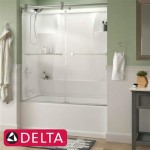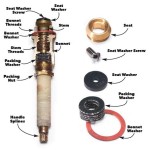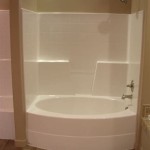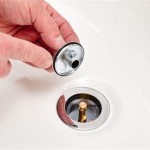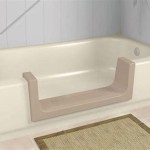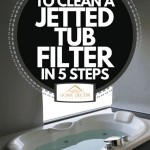Bathtub Surround Kits With Window: A Comprehensive Guide
Bathtub surround kits offer a practical and aesthetically pleasing solution for renovating or upgrading bathrooms. These kits provide a waterproof barrier around the bathtub, protecting walls from water damage and enhancing the overall appearance of the bathing area. When a window is present within the bathtub surround area, additional considerations are necessary to ensure proper installation and long-term performance. This article provides a detailed exploration of bathtub surround kits specifically designed or adapted for use with windows, covering key aspects from material selection to installation techniques and maintenance.
Understanding the Importance of Window Integration in Bathtub Surrounds
The presence of a window within a bathtub surround presents unique challenges. Water resistance becomes paramount, as water exposure is significantly higher in this area. The window frame and surrounding materials must be completely sealed to prevent water from seeping into the wall cavity, which can lead to mold growth, structural damage, and costly repairs. Furthermore, the materials used must be able to withstand constant moisture and temperature fluctuations without deteriorating or warping. Aesthetics also play a crucial role. The bathtub surround should seamlessly integrate with the window, creating a cohesive and visually appealing design. Careful planning and the selection of appropriate materials are essential to successfully incorporate a window into a bathtub surround.
Material Options for Bathtub Surround Kits With Windows
Several materials are commonly used in bathtub surround kits designed for windows, each offering distinct advantages and disadvantages:
Acrylic:
Acrylic is a popular choice due to its durability, non-porous surface, and resistance to mold and mildew. It is also relatively lightweight and easy to install. Acrylic surrounds are often available in various colors and styles, providing design flexibility. However, acrylic can be susceptible to scratches and may fade over time with prolonged exposure to sunlight. When used with a window, the acrylic surround should be carefully sealed to the window frame using a high-quality waterproof sealant.Fiberglass:
Fiberglass, often reinforced with acrylic (acrylic-capped fiberglass), is another common option. It is less expensive than solid acrylic and offers good water resistance. However, fiberglass is more prone to scratching and cracking than acrylic and may require more maintenance. Similar to acrylic, proper sealing around the window is crucial to prevent water damage.PVC (Polyvinyl Chloride):
PVC panels are a cost-effective and waterproof option for bathtub surrounds. They are lightweight, easy to cut, and resistant to mold and mildew. PVC panels are typically available in various colors and textures, including faux tile patterns. However, PVC can be less durable than other materials and may be susceptible to discoloration or warping in extreme temperatures. When used with a window, PVC panels require careful installation and sealing to ensure a watertight barrier.Tile:
While not strictly a "kit," tile remains a classic and durable option for bathtub surrounds, particularly those with windows. Tile offers unparalleled design flexibility and is highly resistant to water damage when properly installed and sealed. However, tile installation is more labor-intensive and requires specialized skills. Grout lines can also be susceptible to mold and mildew if not properly maintained. When using tile around a window, it is imperative to use a waterproof membrane behind the tile and to seal the perimeter of the window with a flexible, mold-resistant sealant.Solid Surface:
Solid surface materials, such as Corian or Swanstone, offer a premium option for bathtub surrounds. They are non-porous, highly durable, and resistant to scratches, stains, and mold. Solid surface surrounds can be custom-fabricated to fit any space and can be seamlessly integrated with window frames. However, solid surface materials are more expensive than other options and may require professional installation. The seamless integration with the window is a significant advantage, minimizing the risk of water intrusion.Installation Considerations for Bathtub Surrounds With Windows
Proper installation is critical to the long-term performance of a bathtub surround with a window. Several key considerations should be taken into account:
Waterproofing:
The most important aspect of the installation is ensuring a watertight seal around the window. This typically involves applying a high-quality waterproof sealant, such as silicone or polyurethane caulk, to all gaps and seams between the window frame and the surround material. The sealant should be specifically designed for bathroom applications and should be resistant to mold and mildew. Multiple layers of sealant may be necessary to ensure a complete seal.Window Frame Condition:
Before installing the surround, the window frame should be thoroughly inspected for any signs of damage or deterioration. Any rotted wood or damaged sealant should be repaired or replaced before proceeding. A properly maintained window frame is essential for a successful and long-lasting installation.Substrate Preparation:
The wall behind the bathtub surround should be clean, dry, and level. Any loose or damaged material should be removed and repaired. In some cases, it may be necessary to install a waterproof membrane behind the surround to provide an additional layer of protection. Cement board is often used as a substrate for tiled surrounds, providing a stable and water-resistant base.Cutting and Fitting:
Accurately cutting and fitting the surround material around the window is crucial for a professional-looking installation. Precise measurements and careful cutting techniques are essential to minimize gaps and ensure a tight fit. A jigsaw or utility knife can be used to cut the surround material, depending on the material type. It is recommended to dry-fit the surround pieces before applying adhesive or sealant to ensure a proper fit.Adhesive and Fasteners:
The appropriate adhesive and fasteners should be used to secure the surround to the wall. The type of adhesive will depend on the material of the surround and the substrate. Follow the manufacturer's instructions carefully when applying the adhesive. In addition to adhesive, fasteners, such as screws or nails, may be necessary to provide additional support, particularly in areas around the window.Ventilation:
Proper ventilation in the bathroom is essential to prevent moisture buildup and mold growth. An exhaust fan should be installed and used regularly during and after showering or bathing. Adequate ventilation will help to keep the bathtub surround and window area dry and prevent water damage.Specific Techniques for Sealing Around Windows
Achieving a watertight seal around the window in a bathtub surround requires careful attention to detail and the use of specific techniques:
Backer Rod:
Before applying sealant, a backer rod should be inserted into any large gaps between the window frame and the surround material. The backer rod provides a surface for the sealant to adhere to and helps to prevent the sealant from sinking too deeply into the gap. This ensures a more effective and durable seal.Masking Tape:
Applying masking tape to the window frame and the surround material before applying sealant can help to create clean and straight lines. The masking tape should be applied close to the edge of the gap to be sealed. After applying the sealant, the masking tape should be carefully removed while the sealant is still wet.Tooling the Sealant:
After applying the sealant, it should be tooled with a wet finger or a specialized sealant tool to create a smooth and concave surface. This helps to press the sealant into the gap and ensures a watertight seal. Excess sealant should be wiped away with a damp cloth.Multiple Layers:
In areas with high water exposure, it may be necessary to apply multiple layers of sealant to ensure a complete seal. The first layer should be allowed to dry completely before applying the second layer. This will create a more durable and watertight barrier.Regular Inspection and Maintenance:
The sealant around the window should be inspected regularly for any signs of damage or deterioration. Any cracked or peeling sealant should be removed and replaced immediately. Regular cleaning of the surround and window area will also help to prevent mold and mildew growth.Maintaining Bathtub Surrounds With Windows
Proper maintenance is essential to prolong the life of a bathtub surround with a window and to prevent water damage. Regular cleaning with a mild soap and water solution will help to remove soap scum, dirt, and grime. Avoid using abrasive cleaners, as they can scratch or damage the surface of the surround. The grout lines, if applicable, should be cleaned regularly with a grout brush and a grout cleaner to prevent mold and mildew growth. The sealant around the window should be inspected regularly and replaced as needed. Promptly addressing any leaks or water damage will help to prevent more serious problems in the future.
By carefully considering the material options, installation techniques, and maintenance practices outlined above, homeowners can successfully install and maintain bathtub surround kits with windows, creating a beautiful and functional bathroom space that is protected from water damage.

Window Kits For Bath Showers Liberty Home Solutions

Window Kits For Bath Showers Liberty Home Solutions

Window Kits For Bath Showers Liberty Home Solutions

How To Install A Bath Tub Surround

Diy Tub Surround Shower Panel Base Kits Innovate Building Solutions

39094 Hd Bathtub Wall Set

Half Tiled Tub Surround Design Ideas

Tw99440a Bathtub Wall Set

Professional Bathtub Wall Surround Kits Duraflex

Bath Surround Kit Shower Tub Slkf 100r China Made In Com
Related Posts

